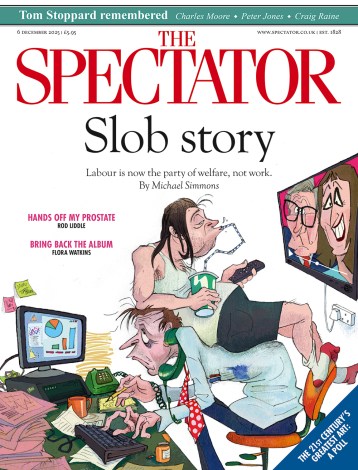The mimic octopus is a remarkable creature. It is the world’s master at shapeshifting. It is able to transform its appearance into that of more than 15 different aquatic animals, depending on the needs of the moment. It can ward off predators by appearing to be more deadly than it really is – by impersonating a poisonous lionfish, for example. It can also lure prey by mimicking a crab, say, trying to attract a mate, before smothering, paralysing and devouring the hapless suitor. It is much studied by marine biologists, but it deserves more attention from economists and diplomats – particularly those trying to understand the Chinese Communist party. Its portrait should hang beside the great communist worthies lining the walls of the Zhongnanhai leadership compound in Beijing.
Maintaining the Party’s grip on power has been paramount, and rather as the mimic octopus relies on fooling those around it, so the CCP counts on the deep western reservoir of gullibility, greed and at times duplicity
After Donald Trump launched his first round of ‘liberation day’ tariffs in April, President Xi Jinping was quick to depict himself as a champion of free trade and globalisation, a defender of international institutions against bullies. He called for global unity against Washington. Just last month, Chinese Premier Li Qiang promised the Word Economic Forum that, in contrast to Trump’s reckless isolationist approach to trade, benevolent Beijing would make its technology available to the world, particularly less-developed countries. To drive that message home, the People’s Daily, the official newspaper of the Chinese Communist party, condemned America’s ‘coercion’ and demanded ‘fairness and justice’ to ‘safeguard the rules-based multilateral trading system’.
Such bromides from the CCP are, of course, absurd, since rule-breaking, erecting barriers to trade, and economic coercion have been central to China’s rise – even more so under Xi. But the display was clever mimic octopus diplomacy, designed to lure in the gullible global business elite, many of whom are so overcome by their hatred of Trump they cannot spot the deceit.
Last month, the CCP anointed five ‘model’ entrepreneurs, parading them in Beijing under a banner that proclaimed: ‘Carry forward the entrepreneurial spirit’. Xi had earlier summoned top technology executives for a pep talk, people he had previously hounded – including Jack Ma, who was driven out of Alibaba, the company he founded, after he criticised the Party. Others, such as Bao Fan, once China’s highest profile technology dealmaker, could not make it. He has not been seen since he disappeared more than two years ago amid vague suggestions of corruption. Still, Xi told them he was on their side and they should work together. Private businesses, which have been more marginalised under Xi than under any CCP leader since Mao, were courted, as were foreign investors. ‘We welcome more foreign businesses to come to China with a global perspective, and achieve win-win and all-win results as China looks to unleash new quality productive forces,’ announced Lin Jian, spokesman for the Foreign Ministry.
CCP shape-shifting is the story of ‘reform and opening’ itself. Rather like the mimic octopus, the Party has a ruthless survival instinct. It was the main motivation for opening the door to foreign investment in the first place, after decades of Maoist madness had left the county traumatised and impoverished. And over the years, the ebb and flow of reform has mirrored the leadership’s insecurities and paranoia. Maintaining the Party’s grip on power has been paramount, and rather as the mimic octopus relies on fooling those around it, so the CCP counts on the deep Western reservoir of gullibility, greed and at times duplicity. China’s supposed open door has long been tightly policed by a capricious CCP doorkeeper, holding it ajar when China needs to attract favoured suitors, slamming it shut when they are no longer useful.
The latest shape-shifting has been accompanied by efforts to play-up China’s technological prowess. Visitors to the World Artificial Intelligence Conference in Shanghai last month were treated to the bizarre spectacle of two humanoid robots pummelling each other in a boxing ring, like a juiced-up version of an old Rock ‘Em Sock ‘Em Robots toy. The not-so-subtle message was that China is ready to take on America when it comes to cutting edge of technology. More China-sympathetic Western journalists have received tours of high-tech facilities. ‘I saw the future. It was not America,’ declared Thomas Friedman in the New York Times, after he was shown Huawei’s usually off-limits Shanghai campus. A credulous Friedman – who praised China’s spending splurge after the 2008 global financial crisis and later asked, ‘what if we could just be China for a day?’ – lauded Beijing’s efforts at AI-driven innovation in order ‘to be permanently liberated from Trump’s tariffs’.
Having expelled, hounded or otherwise intimidated serious western journalists in their efforts to report critically from China, Beijing has turned to western influencers, the useful idiots of the social media age. In June, the China Youth Daily, a CCP newspaper, launched a campaign to lure foreign influencers on sponsored trips to China. The ‘China-Global Youth Influencer Exchange’ programme signed up young social media influencers with at least 300,000 followers who would be expected to showcase the ‘real China’. This followed the CCP’s delight at the May visit from IShowSpeed, the YouTube celebrity, who streamed his way around China, posting awe-struck videos of flying cars and, yes, boxing with a humanoid robot, to his 37 million viewers.
There is more than a touch of the Potemkin about this. Yet to question whether China can really innovate, may seem a little churlish. After all, it has in the likes of Huawei, Baidu, Alibaba and Tencent, some world-class tech companies. DeepSeek, a chatbot designed to rival American developed ChatGPT but trained at a fraction of the cost is held up as evidence of China’s ability to innovate in an area of crucial importance in the race for tech dominance (even if it does tie itself in knots when asked about Taiwan, Tibet or Xinjiang).
Those who marvel at Beijing’s technical advances too often equate research output with innovation capability. Research quantity does not equate to quality, and the ability to imitate and replicate existing capabilities, all too frequently stolen, is very different from the cumulative and gradual process of innovation. China’s research and development programme, though generously funded, incentivises waste and fraud. Adversity can of course be a catalyst for innovation – as can fear of a dictator – and much-sanctioned Huawei, the CCP’s tech champion, has made great strides in developing home-grown chips. However, there must be severe doubts about whether an increasingly dystopian dictatorship, which wants to be in every classroom, laboratory and boardroom, can create a self-sustaining innovation economy through diktat and wads of cash.
An extraordinary – and bold – June editorial in Caixin, a Chinese business publication, appealed to the government to ‘untie the hands’ of researchers, pointing out that a mere 3.9 per cent of university innovation was industrialised. Like all statistics from China, start-up data needs to be treated with caution, but GlobalData, an analytics company, estimates that the value of venture capital deals in China fell around 45 per cent during the first half of 2025, compared with last year. The Financial Times has suggested that start-up activity ground almost to a halt last year. This hardly fits with the claims of a booming innovation economy.
As trade negotiations have dragged on, China has boasted that its reliance on the US market, which had accounted for 20 per cent of China’s exports in 2018, is down to 14 per cent. But much of this is smoke and mirrors – in preparation for trade hostilities, China was shipping substantial quantities of finished or semi-finished goods to the US via third countries, particularly in southeast Asia. In spite of the bravado, China’s economy remains fragile. Property, for decades the motor of the economy, is still in the doldrums. Local governments are sitting on a precarious mountain of debt, the jobs market is deteriorating, and consumers remain unwilling to boost their spending. That is in spite of Xi’s pledge to ‘fully unleash’ the consumer via trade-in programme worth an estimated $42 billion so far this year, and covering a range of consumer goods, from washing machines to electric vehicles (EVs), air conditioners, smartphones and tablets.
Nor have renewable technologies, notably batteries, wind turbines, EVs and solar panels proved to be the magical elixir to replace property as the golden goose of China’s economy. Last month, Xi admitted for the first time that China had a problem of chronic over-production, though he avoided the word. The Party calls it involution (neijuan in mandarin), which describes what it sees as unhealthy and self-destructive competition, fuelling deflation and undermining growth. What he didn’t acknowledge is that this is a direct result of his own policies – the enormous and wasteful subsidies thrown at these industries, which in turn is fuelling global wariness about Chinese exporters dumping at well below cost.
All these problems are compounded by the challenge of measuring what is going on in the economy. Beijing’s announcement last month that its economy grew by 5.2 per cent in the three months until the end of June should be taken with a pinch of salt. Beijing’s statistics, always dodgy, have become increasingly political. Shortly before Christmas, Gao Shanwen, a top economist and former official at China’s central bank, cast doubt on official figures, telling a conference in Washington DC that China’s growth over recent years was probably just 2 per cent, which is less than half what the government had claimed. Gao then promptly disappeared from view. Online commentaries in which he had highlighted soaring unemployment, China’s ‘dispirited youth’ and ‘disenchanted middle-aged’, were deleted. A few months earlier, Zhu Hengpeng, a top economist with the Chinese Academy of Social Sciences’ Institute of Economics also disappeared after making disparaging remarks about Xi’s economic stewardship in what he thought was a private online chat group.
The real problem is Xi himself, who has consistently prioritised security and control over all else and is unlikely to sanction reforms that could dilute the power of the Party. Late last month the old instincts kicked back in as China’s national cybersecurity watchdog launched an investigation into Nvidia, the US chip maker, over alleged security risks related to a chip it had designed specifically for the Chinese market. At the same time Chenyue Mao, managing director at Wells Fargo, was blocked from leaving the country, the latest in a string of opaque exit bans, which the CCP has used increasingly against dissidents or those supposedly involved in criminal probes or other disputes. The American bank suspended all travel to China.
While it is true to say that Trump is haemorrhaging trust in America, Xi’s ability to take advantage of that and pick off US allies or other trading powers is hidebound by the fact that China never enjoyed much trust in the first place. And as for the mimic octopus, marine biologists have observed that after giving birth the females engage in a form of grim self-harm, devouring themselves until they die. So at the end, the world’s master of shape-shifting is its own worst enemy.
An updated paperback edition of Ian’s book, Vampire State: The Rise and Fall of the Chinese Economy, is published this week by Birlinn.








Comments